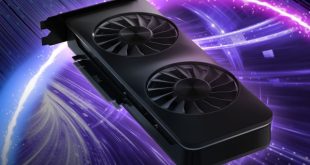AMD's HD7970 is designed to firmly target the performance oriented enthusiast gamer. The design has succeeded on a variety of levels, even though it is too expensive for a huge portion of the audience. A 50% price premium over the last generation HD6970 will hit sales hard, even if AMD are unlikely to admit it.
The only noticeable concern we had at launch however was the reference cooling solution, which could get noisy when pushed hard.
The Sapphire HD7970 Overclock Edition with custom dual fan cooler is without a doubt the finest version of the HD7970 we have reviewed to date. I was extremely impressed with the VTX3D HD7970 X Edition and that card ships in a higher state of default overclock (1050mhz core), but I do prefer the Sapphire solution.
Firstly, the Sapphire Dual X cooler is basically inaudible, even when gaming. The fans are large and they spin slow, meaning that their pitch resonance is difficult to hear, even at close distance with an open case door. This isn't the first time we have enjoyed a similar experience with a Sapphire discrete solution this year, as they are clearly focusing on reducing noise levels as much as possible throughout their range.
Sapphire have preconfigured the card with two bios settings. At default setting the card is almost silent and offers a very modest 25mhz core clock boost over the reference edition. Sapphire also boosted the memory speeds from 1,375mhz to 1,425mhz.
Bios 2 is the setting most of our audience will be interested in, as it raises the fan profile a little and increases the core clock to 1000mhz and the memory speeds to 1,450mhz. Importantly, even with a slightly more aggressive fan profile the card remains very quiet.
Additionally, unlike any other HD7970 we have tested Sapphire have opted to cover the GDDR5 memory and VRM's with high grade heatsinks. This ensures that the fans can be configured with a slightly less aggressive profile, and that the overclocking headroom is maximised. This is a key area in which the Sapphire card blows away the opposition, because this card is built to overclock.
We managed to achieve a staggering 25.3% overclock from the Tahiti core which translated to performance levels close to the dual GPU HD6990 in the Direct X 11 based 3DMark 11. On a side note, it absolutely obliterated the Nvidia GTX590 in the same test. The memory could be clocked to a 6,168mhz effective clock speed, which again has pushed the bar to new levels.
Obviously every sample will vary slightly in regards to overclocking potential, however we are confident that this card exhibits immense headroom due to the class leading cooler, heatsink population and large, effective dual fan implementation.
It may be later to market but Sapphire certainly know how to make an entrance. This is one of the most impressive video cards I have ever tested.
We have no pricing information at time of publication, but you can expect to pay a little more than a reference card.
Pros:
- Fantastic cooler design.
- two bios settings.
- quiet, even when loaded.
- huge overclocking potential.
Cons:
- The HD7970 cards are all expensive.
Kitguru says: If you have the money and want a new HD7970 then this is the one to buy.
 KitGuru KitGuru.net – Tech News | Hardware News | Hardware Reviews | IOS | Mobile | Gaming | Graphics Cards
KitGuru KitGuru.net – Tech News | Hardware News | Hardware Reviews | IOS | Mobile | Gaming | Graphics Cards



